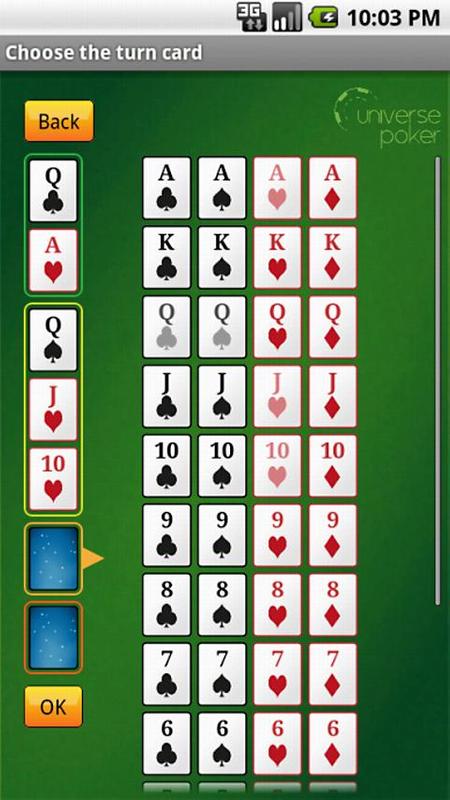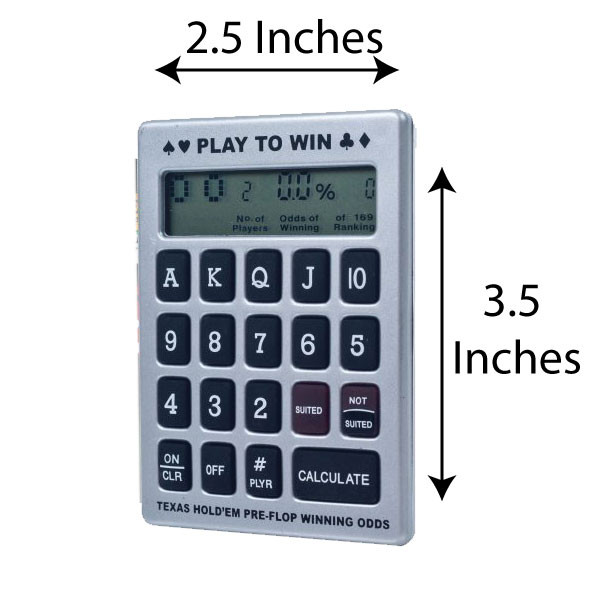Learning Texas Holdem Odds
- Learning Texas Holdem Odds Betting
- Learning Texas Holdem Odds Calculator
- Learning Texas Holdem Odds Card Game
Once the flop has been dealt in Texas Hold'em, you'll be able to count your outs and know how likely it is your hand will improve. That will tell you whether you should stay in the hand or fold.
You can figure out your outs and odds for any hand, but here is a quick and dirty list of the most common scenarios:
Using pot odds in Texas Hold’em will certainly help you beat the tables. While No Limit Hold’em may use more implied odds principles (as you can stand to win much more by being able to freely choose exactly how much you want to bet or raise at any given point), Limit Hold’em uses the concept of expressed pot odds incredibly well! The odds in this Texas Hold'em odds table are unlikely to directly help your overall strategy, but they are pretty interesting nonetheless. The Texas Hold'em odds for each of the different situations have been given in both percentage and ratio odds, so use whichever format you feel comfortable with. Other poker odds charts. Texas Hold'em Introduction Rules. A single 52-card deck is used. All cards count as its poker value. Aces may be high or low. One player is designated as the dealer, usually with a laminated marker. This person does not have to physically deal the game. However it is important that a symbolic dealer position rotate around the table.
Learning Texas Holdem Odds Betting

1.8 Preflop Texas Hold’em Odds; 1.9 Odds of connecting with the Flop in Hold’em; 1.10 Odds On the Flop in Texas Hold’em. 1.10.1 Outs; 1.10.2 Straight and Flush Draw Odds; 1.10.3 On the flop, when you have: 1.11 Odds of hitting a hand by the river from the flop. 1.11.1 On the flop, when you have: 1.12 All-in One-on-One in Texas Hold’em. Poker hands odds & outs: a crash course-guide on poker odds, pot odds, probabilities & odds charts so you can win at Texas Hold’em at the tables or online. One of the most important things that a poker player should know is what their poker odds are in a given situation.
Texas Hold'em Cheat SheetOdds Based on Outs after the Flop
If after the flop, you have:
Two outs: Your odds are 11 to 1 (about 8.5 percent)
A common scenario would be when you have a pair and you are hoping your pair becomes a three-of-a-kind (a set).
Four outs: Your odds are 5 to 1 (about 16.5 percent)
A common scenario would be when you are trying to hit an inside straight draw (there are 4 cards of one number that will complete the straight) or you have two pairs and you hope to make a full house (there are three cards remaining of one number and two of the other).
Eight outs: Your odds are 2 to 1 (about 31 percent)
A common scenario would be that you have an open-ended straight draw. There are four remaining cards of two different numbers that will complete your straight, on the high end and on the low end.
Nine outs: Your odds are 2 to 1 (about 35 percent)
This is the common scenario when you have a flush draw. Any of the nine remaining cards of the suit will give you a flush.
Fifteen outs: Your odds are 1 to 1 (about 54 percent)
A scenario for this is having a straight and flush draw, where either any of the nine remaining cards of the suit will give you a flush, while there are four cards remaining of each of two numbers that would complete a straight. However, you don't count the same cards twice as outs, so those of suit you hope to get don't count again.
Learning Texas Holdem Odds Calculator
The Rule of Four and Two
These odds only apply to counting both the turn and the river, so they assume you will stay in the hand until the showdown. Your odds are only about half as good for a single card draw, such taking the hit on the turn or taking the hit on the river. A common way of looking at the difference in the odds when you will be seeing two cards compared with one is called the Rule of 4 and 2.
After the flop, count your outs and multiply them by four to get your percentage odds. This doesn't give you an exact number, but it is quickly in the ballpark. With 15 outs, 4 x 15 = 55 percent you'll complete that straight or flush with the next two draws.

Learning Texas Holdem Odds Card Game
However, when you are calculating the odds that a single draw will improve your hand, you multiply the outs by two rather than 4. With 15 outs, 2 x 15 = 30 percent chance.